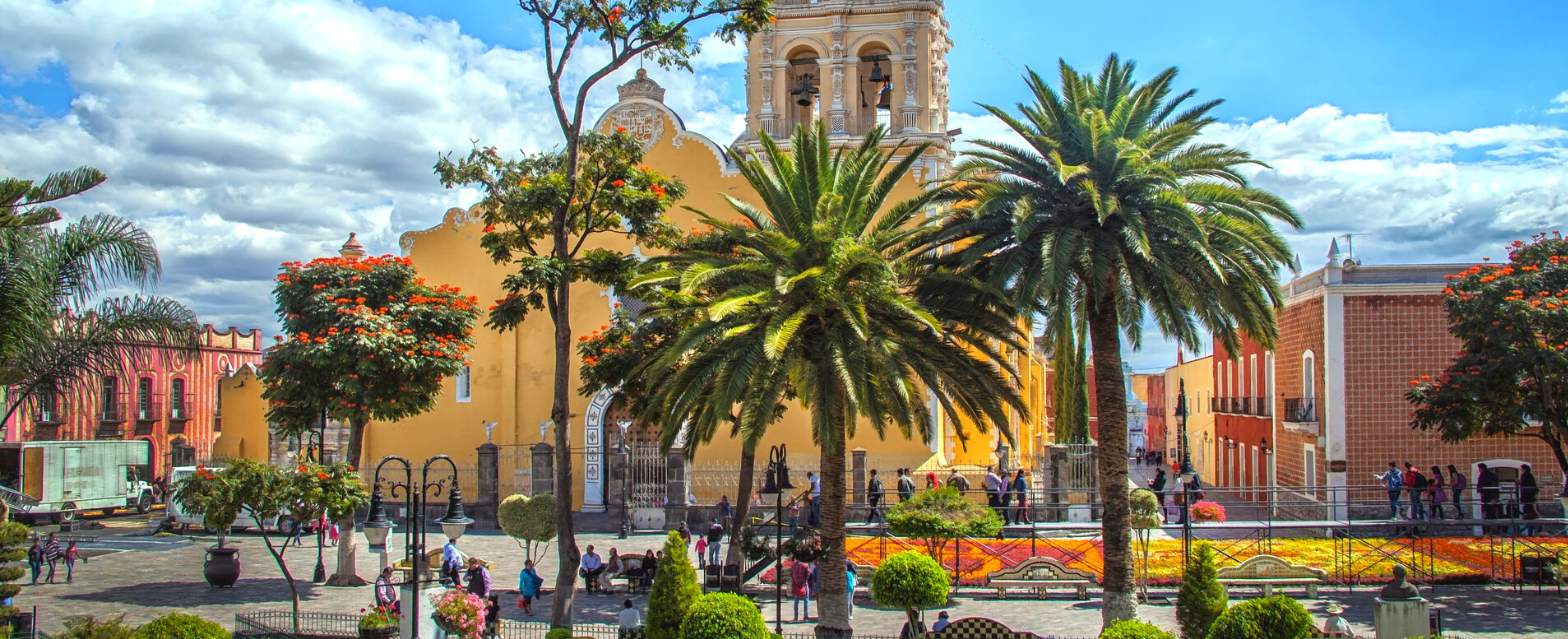Would you like to know what living in Mexico City is like?
Mexico City is not only the largest city in Latin America. It’s the largest city in all of North America. Considered the Manhattan of Latin America, this place has something for everyone. You’re spoiled for choice in CDMX (Ciudad de Mexico- its official name) when it comes to places to live or things to do.
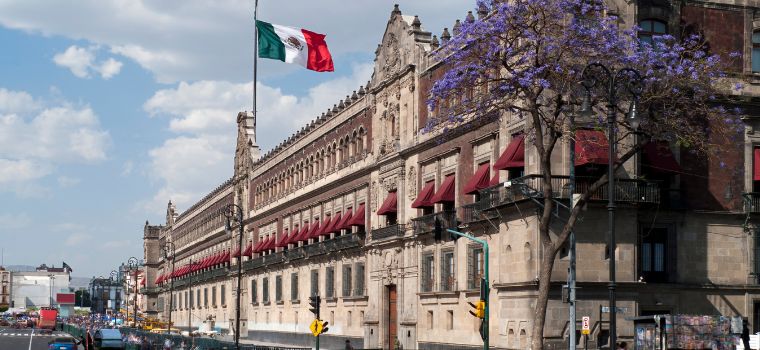
The best part is you can enjoy a relaxed lifestyle here without feeling like you’re in an urban jungle.
Personally, it’s my FAVORITE city in all of Mexico. This is where I was born and raised. My entire family lives here. So I may be a bit biased. But I LOVE Mexico City and everything it has to offer! But it may not be for everyone. So, I want to give you an overview of what makes this place so special!
Let’s take a look:
Population in Mexico City
It is the most populated city in North America. The metropolitan area has a whopping 22 million+ people, while the city’s population is about 9 million.
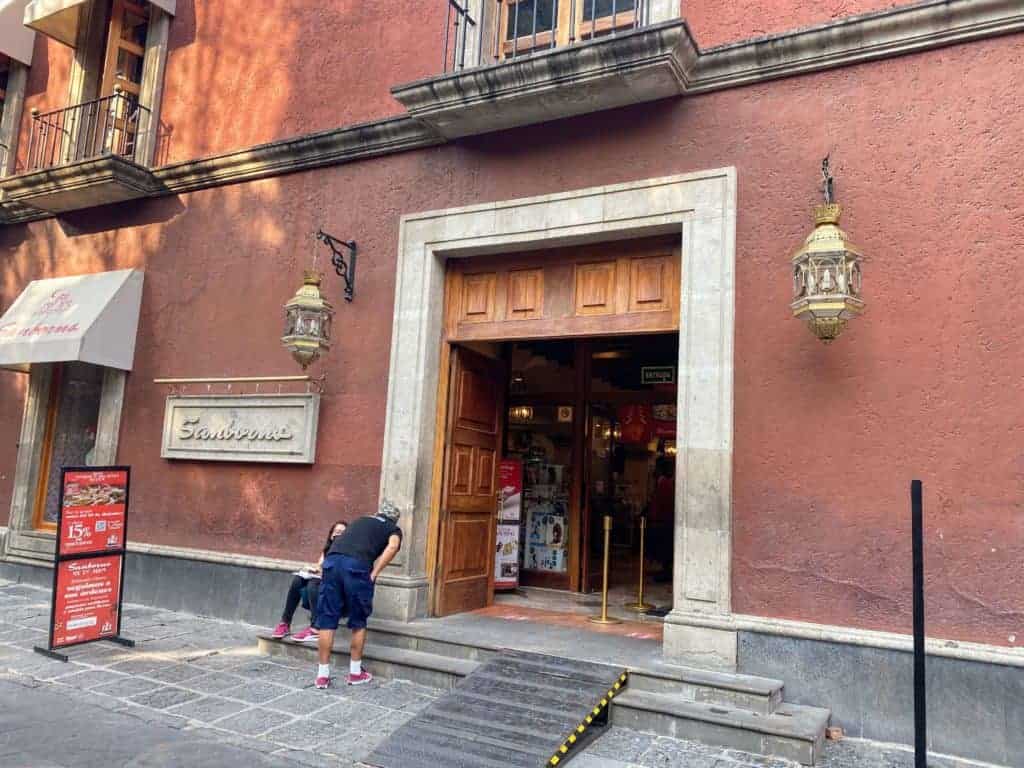
Mexico City is truly a melting pot. You can find people from around the world and across Mexico here. From indigenous people to digital nomads and everything in between. It’s not only for young families with kids though. There are active seniors, and many others choose Mexico City as their home.
And even though you are always surrounded by people, each neighborhood can feel like its own little town. So what’s the weather like in Mexico City?
Weather in Mexico City
With an altitude of over 7,300 ft and being so close to the equator, the city’s climate is temperate year-round. The daytime highs are usually between 70-80F, with average temperatures of 57-67F. March to June are the warmer months.
December and January are cooler, with lows in the mid-40s. But there’s plenty of sunshine and clear skies, so it’s not just gloomy weather.
The rainy season runs from April to November. But the showers are short and rarely inconvenient. Although sometimes it pours so hard for a few hours that the city can flood easily. Especially since Mexico City is in a valley surrounded by mountains.
Because it sits near one of the most active seismic plates, Mexico City does experience earthquakes.
Cost of living in Mexico City
CDMX is not one of the cheapest places to live. But it’s still very affordable when you compare it to most any other city north of the Mexican border.
Here are some average cost of living examples:
(Sources: Numbeo, Expatistan, and data from our customers)
Rent
Mexico City has 16 colonias (boroughs). So, you can find rentals for all budgets.
- 1-bedroom apartment (city center) – MXN16,000 or USD800
- 1-bedroom apartment (outside city center) – MXN10,000 or USD500
- 3-bedroom apartment (outside city center) – MXN18,000 or USD900
When you walk around, keep an eye out for signs that say “se renta” or “se alquila” (meaning “for rent”) with contact numbers.
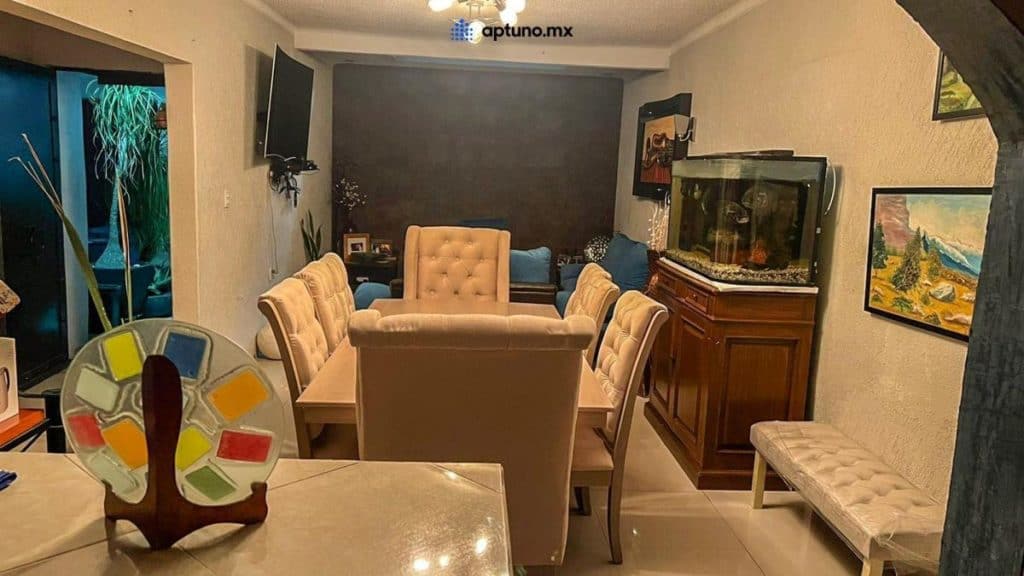
Utilities
The monthly utility costs for a single person:
- Water – MXN100-200 or USD5-10
- Gas – MXN400 or USD20
- Electricity – MXN400 or USD20
- Internet – MXN600 or USD30
Groceries and eating out
- 3-course dinner at a mid-range restaurant (for two) – MXN750 or USD37.50
- Street taco – MXN12 or USD0.60
- Pint of domestic beer – MXN50 or USD2.50
Each colonia has a variety of restaurants, cafes, bowling alleys, movie theaters, malls, supermarkets, stores, and local markets or tianguis. A tinaguis is a pop-up outdoor market that usually operates on specific days of the week. Buying your produce at the tianguis is one of the best ways to save money when living in Mexico. And on the flip side of that, the grocery stores that carry international foods and imported items tend to be more expensive.
The local markets are vibrant and affordable. You can buy almost everything here. Like groceries, home goods, ingredients, gifts, and unique art. But if you don’t need to do a full grocery trip, you’ll find small shops in each “colonia” called Abarrotes that carry many everyday items. These are similar to convenience stores in Canada or the USA.
A single person can expect to pay about MXN $2,000-4,000 or USD $100-200 for monthly groceries in Mexico City. This obviously varies based on how often you shop and what’s in your basket.
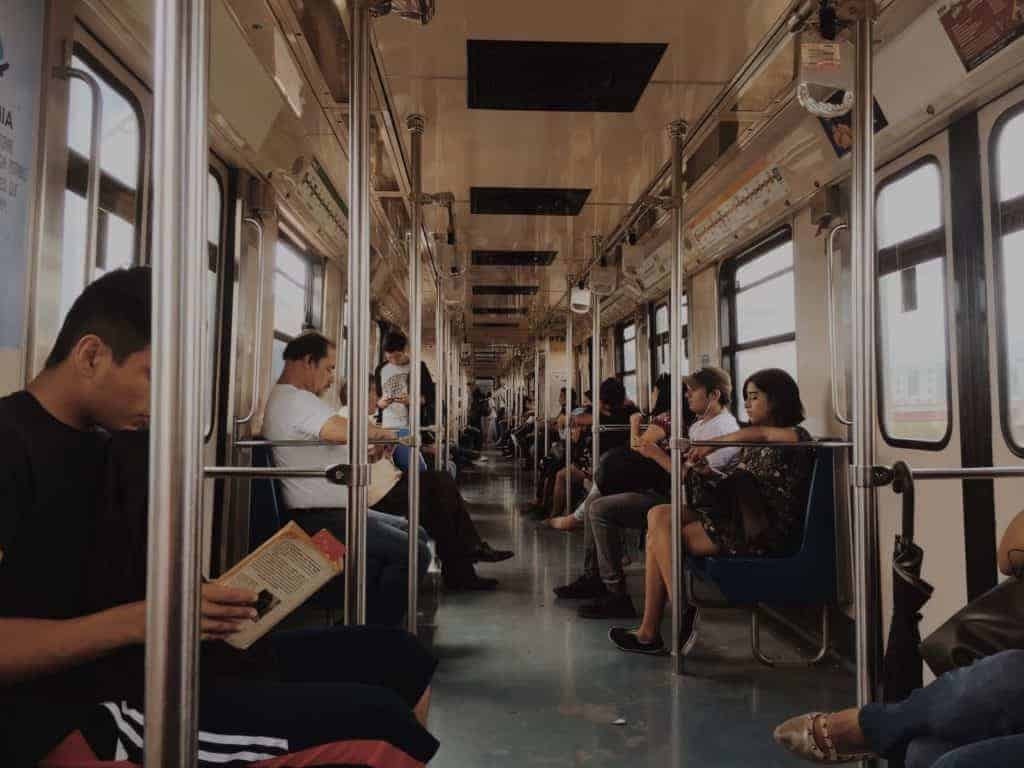
Transport
The city has many affordable transport options, including the second largest Metro in North America, Metro buses, colectivos (local buses), taxis, and rideshare services such as Uber.
- Metro: MXN5 or USD0.25 per trip
- Local bus: MXN6 or USD0.30 each way
- Taxi: Around MXN15 or USD0.75 per mile
Mexico City is great for walking! You can also try the bicycle system called Ecobici, if you’re up for a fun and healthy commute.
A car is not a must to live here. In fact, a lot of people don’t own one. And if you do have one the city has restrictions on the days you can drive specific vehicles (based on age of car and license plate). This is all in an effort to control pollution.
In total,
The cost of living can be about MXN $30,000-40,000 or USD $1,500-2,000 a month for a single person.
Couples may spend MXN $40,000-50,000 or USD $2,000-2,500.
Healthcare in Mexico City
Mexico City has some of the best medical care in Latin America. And some of the best hospitals can be found here. Not only are the facilities very modern and well-maintained, but a lot of doctors and staff at private hospitals speak English.
And remember how I said you wouldn’t need a car to live in Mexico City? Well, even with medical care each colonia has its own hospitals, medical facilities, and pharmacies.
Many pharmacies offer medical consultations. San Pablo Farmacia and other pharmacies even deliver items to your doorstep.
Healthcare in Mexico City is affordable compared to the U.S. or Canada. But as I always say, it’s wise to have private health insurance in Mexico for an emergency or unexpected health event.
Foreigners looking to retire in Mexico don’t consider CDMX as an ideal destination. Usually, because it’s too big and they find it to be overwhelming. But if you’re moving to Mexico with aging parents or want to plan for your later years, the city has excellent assisted living facilities, nursing homes, and caregiver services.
Connectivity to the rest of the world
Mexico City is a key travel hub with three international airports. The main airport is the Benito Juárez International Airport. That’s where most international flights land in Mexico City. You can get direct flights to North and South America, the UK, Europe, and Asia, from here.
Things to do in Mexico City
If you’re a fan of food, art, nightlife, history, adventure, nature (and many other things), Mexico City is an ideal place to live.
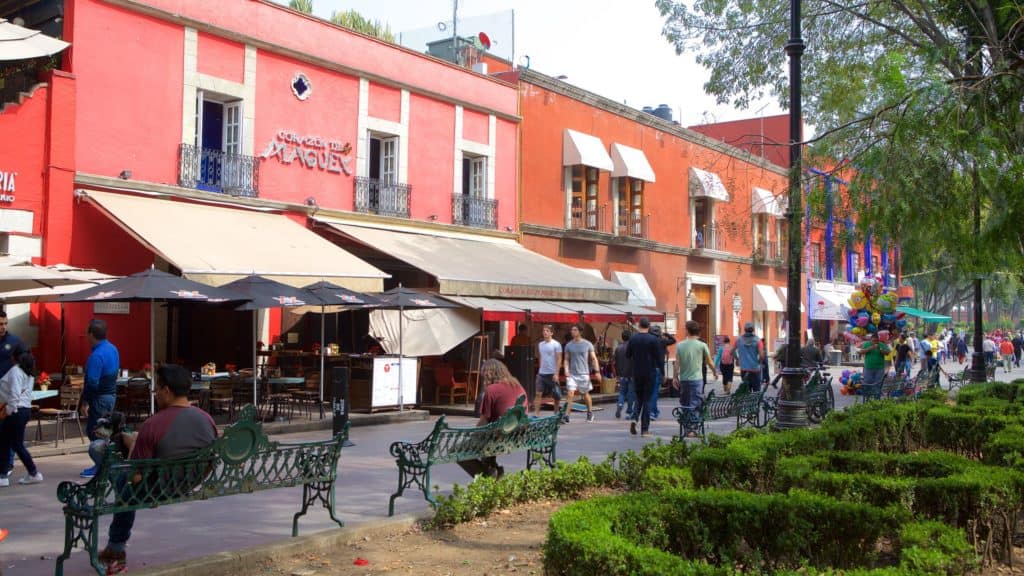
Let’s look at a few activities:
Indulge in the incredible variety of food
You can choose from a large range of international foods to local street food, and from fine dining to budget meals.
The street tacos are an absolute must-try, and they’re everywhere, with more options at night. Visit El Charco de las Ranas for some amazing tacos.
Remember to try the native foods of Mexico City.
Enjoy the outdoors
The city surprisingly has many green spaces and parks like Parque España and Parque México. They are very family and pet friendly. You can also join some fun activities like dance classes here.
Chapultepec Park, one of the largest in Latin America, has lakes, museums, a castle, and a zip line. It feels like a forest in the city. It’s also a popular place for bike rides and paddle boating.
And there are national parks and opportunities for hiking, boating, and other adventure, just outside Mexico City.
Experience the history and culture

The city’s historic center has much to see, including an ancient Aztec temple (Templo Mayor), monuments, museums, and other attractions. There’s also plenty to experience in colonias like Coyoacán, the home of Frida Kahlo and Diego Rivera.
You can visit several archaeological sites outside Mexico City, like the magnificent Teotihuacán.
The city has year-round festivals and celebrations. You’ve probably heard of the Día de Muertos, Independence Day, and Festival de México, among many more.
Safety
Many colonias are safe to live in and go about. But the city has unsafe areas. If you’re unsure of where to avoid, ask any resident. I can tell you the some of the main colonias that are perfectly safe are
- Del Valle
- Narvarte
- Roma
- Condesa
- San Angel
- Polanco
- Santa Fe
- Roma Norte
- Coyoacan
Remember to be aware of your surroundings and belongings and practice general safety measures.
Watch our latest video with an expat living in Mexico who shares her insights.
Plan your move to Mexico City
I recommend you make a visit to this wonderful city with an open mind to see what living here is like. And who knows? You may even want to retire in Mexico City!
But I know that navigating this giant city on your own can seem daunting.
That is why we offer private relocation tours. These are not touristy tours. Our expert guides will show you different neighborhoods, share important info (including the negatives), and help you decide if living in Mexico City is for you.
And we also know that navigating Mexican bureaucracy can be challenging. So we created the Complete Mexico Relocation Guide for all the info you need to start a new life in Mexico. We cover the most important basics of moving to Mexico the right way. And we also give you our list of recommended contacts in Mexico City such as real estate agents, immigration facilitators, car brokers, pet transport companies and more!




